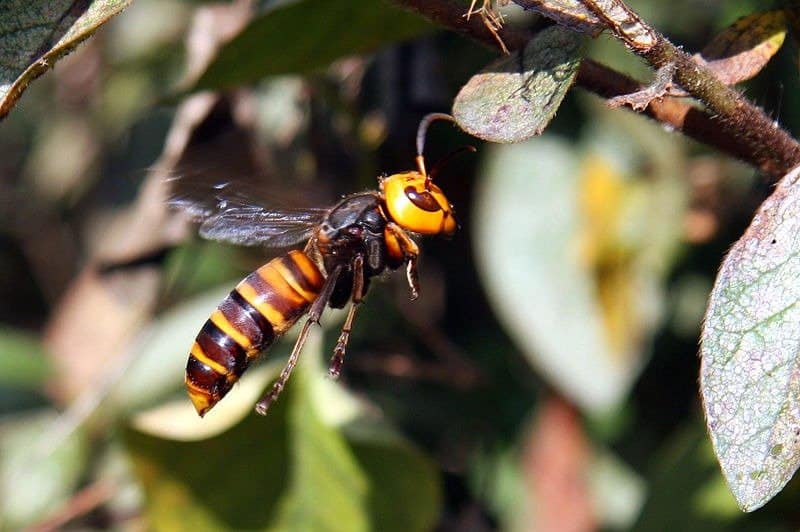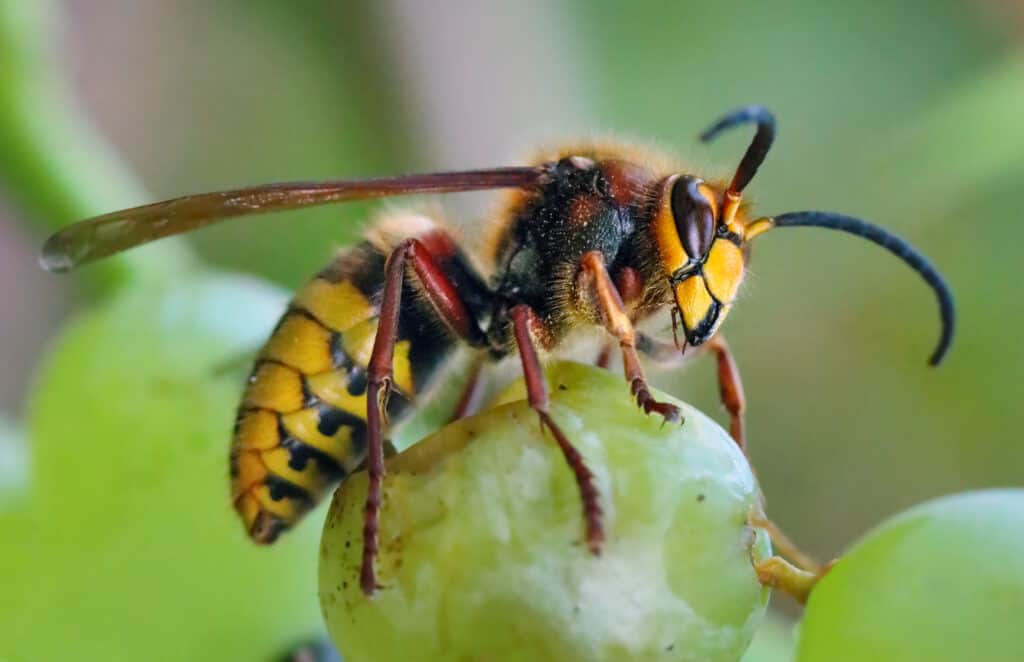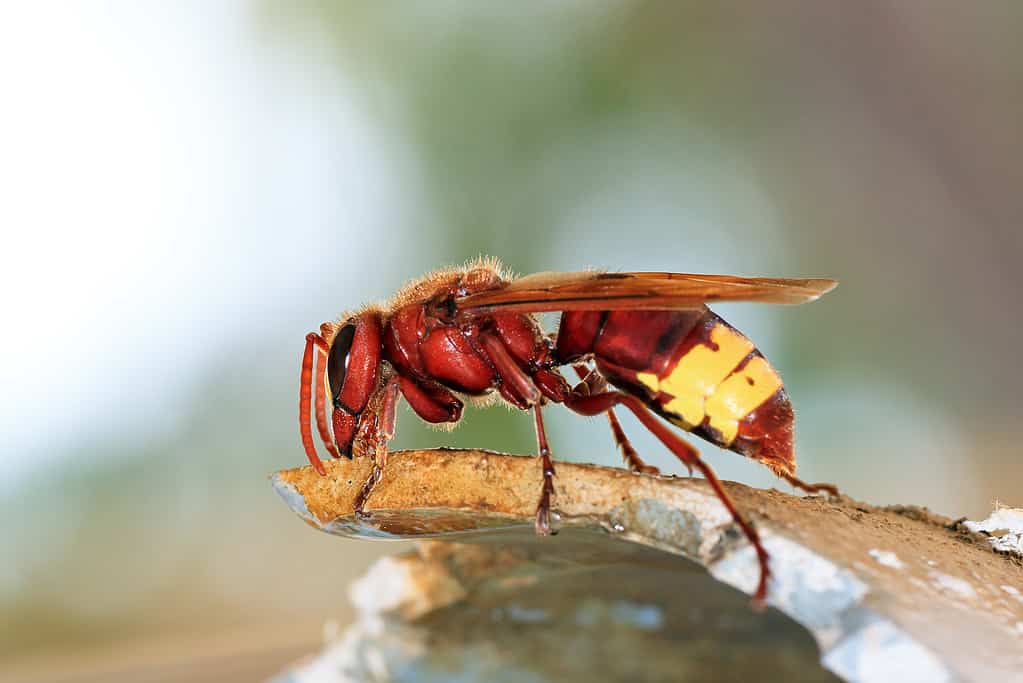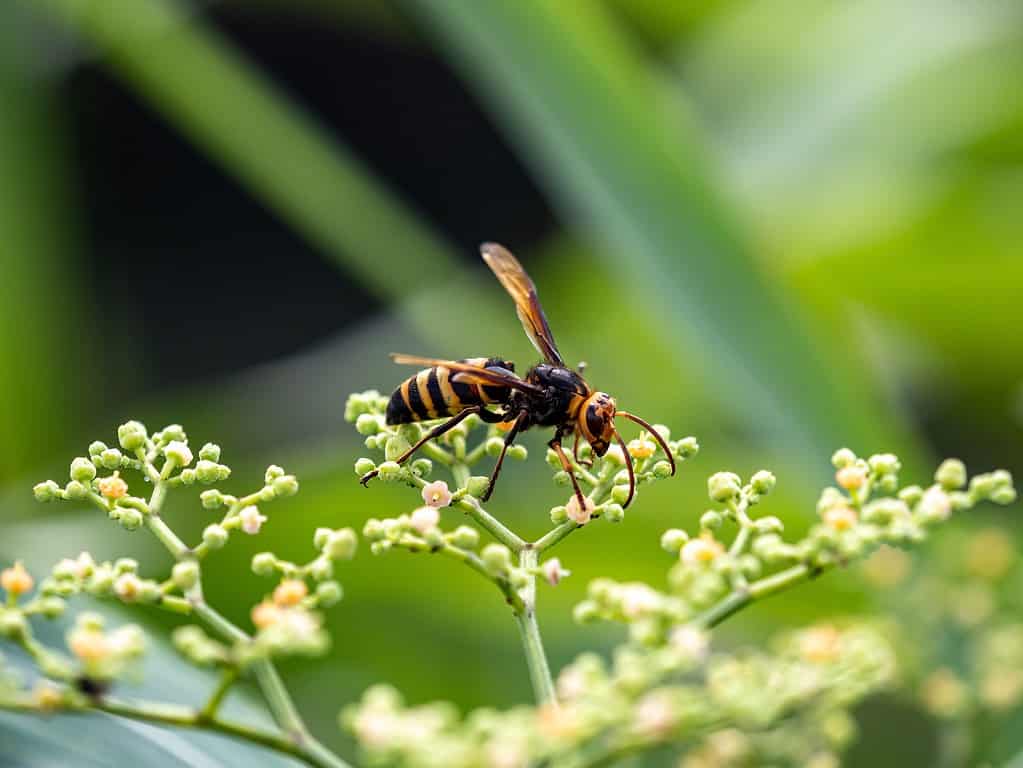During warmer weather, several types of hornets become an expected sight as they fly overhead. They show off their signature black and yellow stripes. However, opinions may differ when it comes to these creatures. While some may adore them for their beauty, others may feel absolutely terrified. Well, there is one thing for sure… it’s best to keep a safe distance from this potentially deadly insect.
Regarding their danger, hornets boast a significant threat owing to various factors. First of all, their stings are known to be extremely painful. Unlike bees, which can only sting once, hornets possess the ability to sting multiple times resulting in more significant discomfort. These stings can cause allergic reactions and sometimes even death. In addition to their potent stingers, hornets are fiercely protective over their nests. If they sense danger in the vicinity, these insects become incredibly aggressive. They unleash a torrent of attacks on intruders who come too close.
If you unexpectedly encounter a hornet, maintain a safe distance and avoid causing any disturbance. Protective gear like long-sleeve shirts and pants are recommended wherever possible. Stay calm with utmost patience while making slow movements around them. Abrupt gestures or swift movements might worsen the situation by inciting an attack from these aggressive insects.
Asian Giant Hornet (Vespa mandarinia)

They have a yellow-orange head and a black and yellow-striped abdomen.
©Fufill / CC BY-SA 3.0 – License
Considered one of the most dangerous species of hornets, the Asian giant hornet resides in several countries in Asia. This particular species belongs to the Vespa genus and is known to be found mainly in Japan, China, and Korea. The Asian giant hornet bears the title of being one of the most sizable hornet species known to date. The queen hornet can grow up to a staggering 2 inches, while the working hornet grows up to 1.5 inches.
They have a yellow-orange head and a black and yellow-striped abdomen. They display prominent mandibles that can effortlessly cut off the heads of other insects, allowing them to ravage their prey. In addition, they have venomous stingers that inflict severe discomfort and pose significant risks to humans. The toxic substance they produce has potent properties capable of triggering anaphylactic shock. This can lead to fatality, particularly among people susceptible to bee or wasp stings.
Asian Hornet (Vespa velutina)

The Asian hornet should not be taken lightly. It possesses venom that can inflict excruciating pain and potentially lead to death.
©Brais Seara/Shutterstock.com
Originating from Southeast Asia, the Asian hornet is an invasive species known for its detrimental impact on European bee populations. These tiny insects feature a distinct appearance comprised of black and brown stripes across their bodies and yellow legs. While queen Asian hornets can grow up to lengths of 1.6 inches, workers typically measure around 1.2 inches.
It is undeniable that the Asian hornet has some extraordinary predatory traits. Its skillful tactics when pouncing on prey are noteworthy examples of how effective they are as hunters. What makes them particularly interesting is their lightning-fast flight velocity. They achieve speeds around 25 mph! And their impeccable vision allows them to accurately pinpoint prey like butterfly species.
In addition, the Asian hornet should not be taken lightly. It possesses venom that can inflict excruciating pain and potentially lead to death.
European Hornet (Vespa crabro)

European hornets are usually not aggressive toward people and only sting when they feel threatened.
©TTstudio/Shutterstock.com
The European hornet resides in Europe and certain regions of Asia. This hornet has unique physical attributes that include stripped brown-and-yellow-colored bodies accompanied by bright yellow heads. They feature distinct spotted eyes or black spots, making them stand out amongst other similar insects.
European hornets are usually not aggressive toward people and only sting when they feel threatened. If this hornet stings, you may experience swelling and breathing problems, which can result in an allergic reaction.
Oriental Hornet (Vespa orientalis)

One intriguing characteristic about these hornets is that they can use the sun’s rays as a source of energy.
©Dennis van de Water/Shutterstock.com
Parts of the Middle East and regions of Asia are the main habitats for the Oriental hornet. You can distinguish them from other hornet species by their brown and yellow striped body markings. Their legs are a bright yellow tint, while their wings display a dark shade of brown. Oriental hornets are very energetic during the day. Fragrant aromas of sweet drinks and vibrant hues of flowers attract them.
One intriguing characteristic about these hornets is that they can use the sun’s rays as a source of energy. These hornets use the pigments found in the colored stripes of their bodies to convert sunlight into energy, which powers their daytime activities.
It’s best to avoid Oriental hornets and their nests because when they feel threatened, they will attack using their sharp stinger, inflicting immense pain.
Black-Tailed Hornet (Vespa ducalis)

You can easily recognize this hornet by its unique black and yellow body stripes and black tail segment.
©Wirestock Creators/Shutterstock.com
Asian countries like China, Korea, and Japan are home to the black-tailed hornet. In comparison to the Asian giant hornet, back-tailed hornets are a lot smaller. You can easily recognize this hornet by its unique black and yellow body stripes and black tail segment. Black-tailed hornets make their nests out of a substance that resembles paper by combining wood pulp with saliva. These nests are in trees, bushes, and even buildings.
Black-tailed hornets are responsible for building a solid structured home for the queen, where she grows the colony by laying her eggs and adding new worker wasps to the nest. Furthermore, keep a distance from these hornets as they will use their stingers to attack.
Greater Banded Hornet (Vespa tropica)

If the greater banded hornet stings multiple times, it can lead to fatalities.
©RealityImages/Shutterstock.com
The banded hornet is an aggressive member of the Vespidae family. These tropical insects present themselves in Thailand, Malaysia, Indonesia, Singapore, and Africa. The greater banded frequently resides in forests and rural areas surrounded by an abundance of vegetation. They have a black body with stripes of a golden-brown hue. Their stingers are at the tip of their abdomen, and their wings are transparent.
The size and colors of the hornet make it easy to identify. Once spotted, they tend to put people in a panic, and for good reason. This insect has an aggressive nature. And unfortunately, if the greater banded hornet stings multiple times, it can lead to fatalities.
The photo featured at the top of this post is © Elina Litovkina/Shutterstock.com
Thank you for reading! Have some feedback for us? Contact the AZ Animals editorial team.






